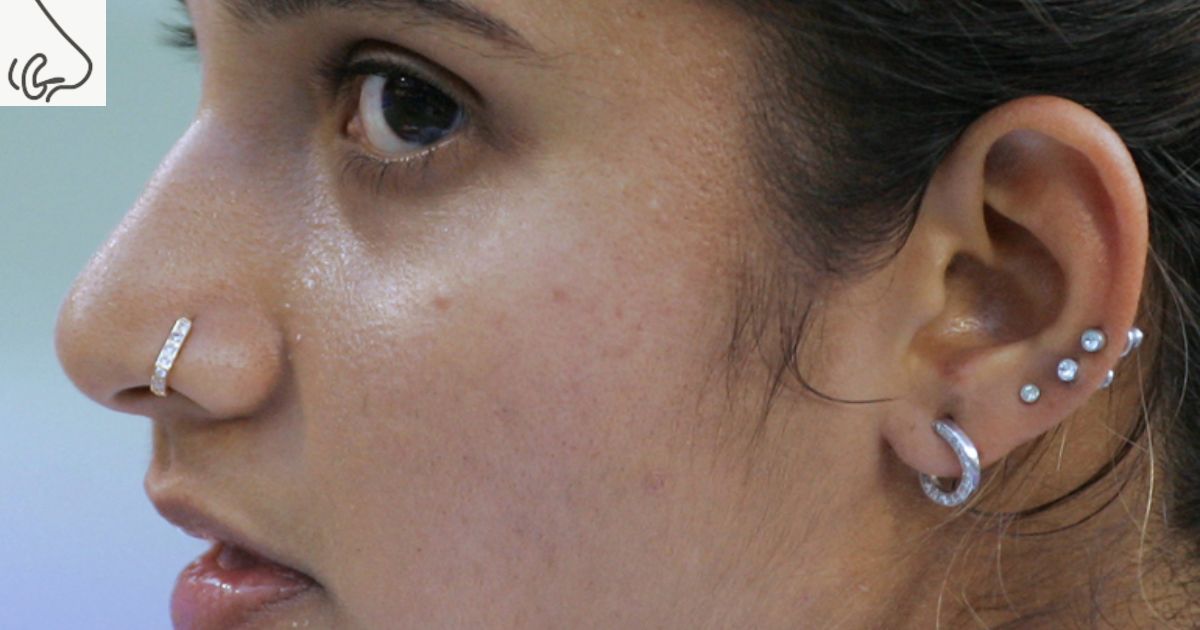Nose piercings are a popular form of body art, allowing individuals to express themselves uniquely. However, caring for a new nose piercing is crucial to ensure its healing and overall health. One common question that arises is whether you can go swimming after getting a nose piercing. In this comprehensive guide, we will explore this concern and provide you with all the information you need to make an informed decision about swimming with a new nose piercing.
Table of Contents
- Understanding the Importance of Proper Aftercare
- The Initial Healing Period
- The Role of Water in Piercing Healing
- Swimming in Different Types of Water
- Swimming in Chlorinated Pools
- Swimming in Natural Bodies of Water
- Can You Go Swimming with a Fresh Nose Piercing?
- The Time Frame
- Potential Risks and Complications
- Professional Piercing Advice
- Precautions and Safety Measures
- Choosing the Right Type of Jewelry
- Waterproof Bandage or Sealant
- Rinse and Clean After Swimming
- Step-by-Step Guide to Swimming with a New Nose Piercing
- Planning Your Swim
- Protecting Your Piercing
- Post-Swim Care
- Alternatives to Full Submersion
- Shower Safely
- Consider Bathing
- Use a Protective Nose Plug
- Troubleshooting Common Issues
- Signs of Infection
- Dealing with Irritation
- Consult a Professional
- Frequently Asked Questions (FAQs)
- Can I Swim in the Ocean with a New Nose Piercing?
- How Long Should I Wait Before Swimming with My Nose Piercing?
- What If I Accidentally Submerge My Nose Piercing?
- Conclusion
- Balancing the Love for Swimming and Piercing Care
- Professional Guidance and Self-Care
1. Understanding the Importance of Proper Aftercare
The Initial Healing Period
The healing time for a nose piercing can vary from person to person, but it generally takes about 6 to 12 weeks. During this initial healing period, the pierced area is vulnerable to infection and other complications. Proper care is essential to ensure the piercing heals correctly.
The Role of Water in Piercing Healing
Water, especially in recreational settings like swimming pools, hot tubs, and natural bodies of water, can introduce a range of potential risks to a healing nose piercing. These risks include exposure to bacteria, chemicals, and contaminants that can interfere with the healing process.
2. Swimming in Different Types of Water
Swimming in Chlorinated Pools
Chlorine is commonly used to disinfect swimming pools, and it helps maintain water hygiene. However, it can also irritate and dry out the skin, potentially causing issues for a healing piercing. Let’s delve into the specifics of swimming in chlorinated pools and the precautions you should take.
Swimming in Natural Bodies of Water
Natural bodies of water, such as rivers, lakes, and oceans, may contain various microorganisms and contaminants. Submerging a fresh piercing in these environments can increase the risk of infection. We’ll explore the concerns and considerations when swimming in natural bodies of water with a new nose piercing.
3. Can You Go Swimming with a Fresh Nose Piercing?
The Time Frame
The general guideline for nose piercing aftercare is to avoid submerging your piercing in any body of water, including swimming pools, hot tubs, and natural bodies of water, for the first 6 to 12 weeks. During this initial healing period, your piercing is most vulnerable to complications, making Swimming After Getting Your Nose Pierced a topic that requires careful consideration and adherence to aftercare recommendations.
Potential Risks and Complications
Swimming with a fresh nose piercing carries several risks, including:
- Infection: Exposing your piercing to water sources that may contain bacteria can lead to infection.
- Irritation: Chlorine and other chemicals in swimming pool water can irritate the piercing site.
- Contaminants: Natural bodies of water can contain contaminants that may interfere with the healing process.
Professional Piercing Advice
Always consult your professional piercer for advice on when it’s safe to go swimming with your specific nose piercing. They can provide guidance based on the healing progress and your individual circumstances.
Precautions and Safety Measures
Choosing the Right Type of Jewelry
Opt for high-quality, hypoallergenic jewelry that reduces the risk of irritation or allergic reactions. Discuss jewelry options with your piercer to make an informed choice.
Waterproof Bandage or Sealant
Consider using a waterproof bandage or a specialized piercing sealant to cover your piercing. This can provide an extra layer of protection against waterborne contaminants. Learn more about these protective measures.
Rinse and Clean After Swimming
After swimming, it’s crucial to rinse the piercing with clean, fresh water and follow your regular aftercare routine to minimize potential risks. Discover the essential steps for post-swim care.
Step-by-Step Guide to Swimming with a New Nose Piercing
Planning Your Swim
Choose the right swimming location by opting for a well-maintained pool or a clean, natural body of water. Scheduling your swim during a less crowded time can reduce the risk of contaminants.
Protecting Your Piercing

Use a waterproof bandage or sealant to cover your piercing and avoid submerging your head to prevent direct contact with water. These precautions are essential for keeping your piercing safe during a swim.
Post-Swim Care
After swimming, rinse your piercing with clean, fresh water to remove any potential contaminants. Make sure you continue with your standard aftercare regimen to support the healing process.
Alternatives to Full Submersion
Shower Safely
Taking a shower is generally safe for a new nose piercing. Ensure that you don’t directly expose the piercing to high-pressure water, and be gentle when cleaning the area. Learn how to shower safely with your piercing.
Consider Bathing
While full submersion is discouraged, taking a bath can be a safer option if you want to enjoy water activities. Ensure that the water is clean and that you handle the piercing carefully. Discover the benefits of bathing with a fresh nose piercing.
Use a Protective Nose Plug
Invest in a protective nose plug designed specifically for swimmers. This can help prevent water from entering your nasal passages and minimize the risk of contact with the piercing. Learn how to use a nose plug effectively.
Troubleshooting Common Issues
Even with precautions, you may encounter some common issues while swimming with a fresh nose piercing. Learn how to address these problems:
Signs of Infection
If you notice signs of infection, such as increased redness, swelling, discharge, or pain, consult your piercer or a healthcare professional promptly. Recognize the signs and act accordingly.
Dealing with Irritation
Chlorine or saltwater can be drying and irritating. Ensure that you moisturize the area after swimming and maintain your regular aftercare routine. Discover how to soothe and care for an irritated piercing.
Consult a Professional
If you experience any issues or have concerns about your nose piercing, consult a professional piercer or healthcare provider for guidance and potential solutions. Know when it’s necessary to seek professional assistance.
FAQs
Can I Swim in the Ocean with a New Nose Piercing?
Swimming in the ocean with a fresh nose piercing is discouraged during the initial healing period due to the presence of saltwater and potential contaminants. Learn why ocean swimming should be approached with caution.
How Long Should I Wait Before Swimming with My Nose Piercing?
Wait at least 6 to 12 weeks before considering swimming with a fresh nose piercing. Consult your piercer for personalized advice and recommendations tailored to your healing progress.
What If I Accidentally Submerge My Nose Piercing?
If your piercing accidentally gets submerged, rinse it with clean water and follow your regular aftercare routine to minimize potential risks. Know what to do in case of accidental submersion.
Conclusion
In conclusion, whether you can go swimming after getting your nose pierced depends on various factors, including the stage of healing, the type of water source, and the precautions you take. It’s crucial to prioritize the healing process of your piercing to prevent complications and ensure its long-term success.
Balancing your love for swimming and your commitment to proper nose piercing care is achievable with careful planning, the right precautions, and professional guidance. Always consult your piercer for personalized advice, and remember that your health and the well-being of your piercing should be the top priorities.



















